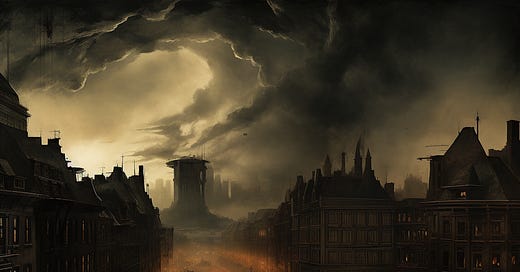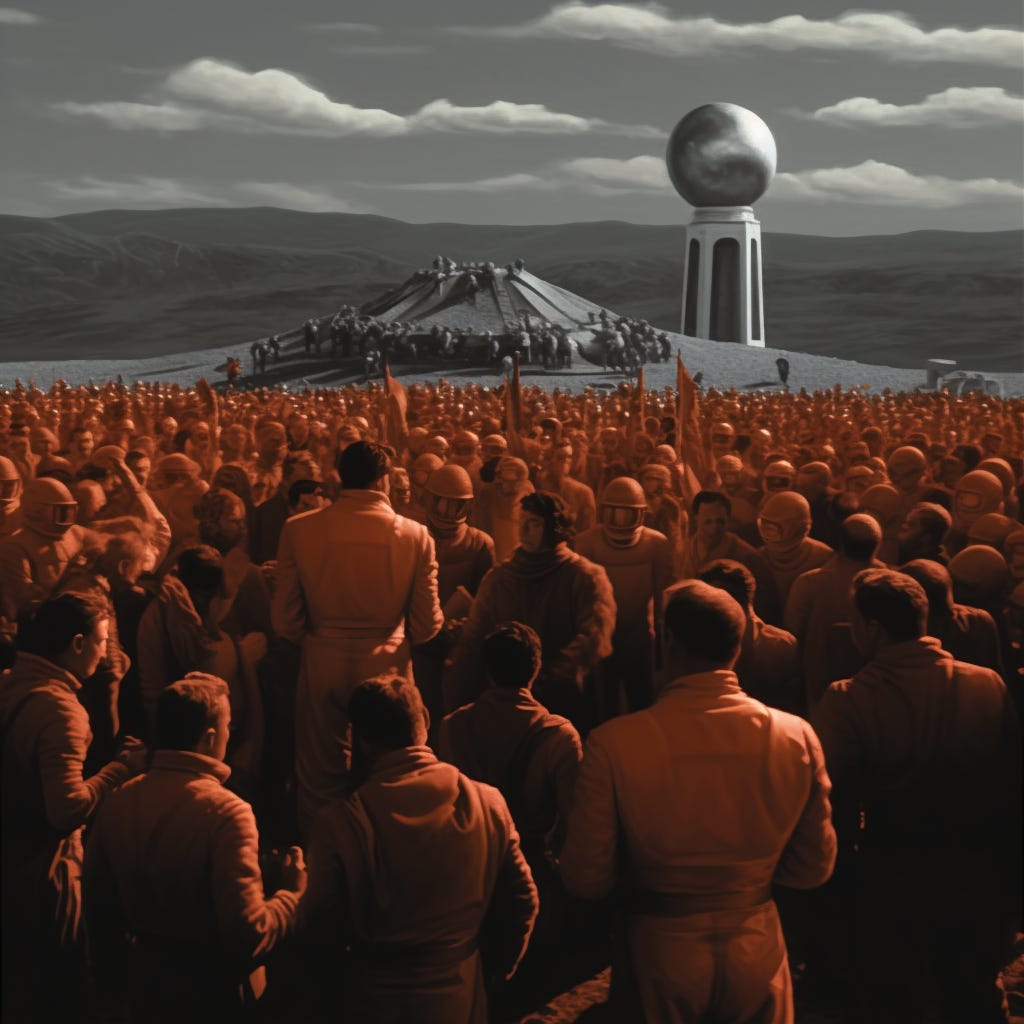The Golden Age of Danish Cinema: Verdens Undergang and Himmelskibet
In the early 20th century, a remarkable chapter unfolded: Denmark solidified its position as a pioneering force in this genre, producing two sci-fi masterpieces during the era of silent film.
In the early 20th century, a remarkable chapter unfolded in the world of cinema, where the fusion of art and science gave birth to an exceptional era. Danish cinema emerged as a prominent contributor to this golden age, leaving an indelible mark, especially in the realm of science fiction. During this period, Denmark solidified its position as a pioneering force in this genre, producing two outstanding sci-fi masterpieces during the era of silent film.
The pivotal moment arrived in 1913 when the film "Atlantis" graced the silver screen. This cinematic gem featured the iconic Danish-German film stars Olaf Fønss and Ebba Thomsen in leading roles. However, it was the 1916 production "Verdens Undergang" (The End of the World) that truly propelled Danish cinema into the sphere of science fiction. Directed by the visionary filmmaker and enterprising spirit, August Blom, with a screenplay crafted by Otto Rung, this film is often regarded as the cornerstone of Denmark's golden era of cinema.
A closer examination of the film's plot reveals its inspiration from a celestial event - the appearance of Halley's Comet, a phenomenon documented in Chinese history as far back as 232 BC, and due to make its 30th appearance in 1910. "Verdens Undergang" narrates the harrowing events that unfold on Earth during a close encounter with a comet. Set against a backdrop of natural disasters and societal unrest, the film struck a profound chord with audiences, particularly during a period shadowed by the looming specter of World War I and escalating global tensions. It succeeded in drawing vast audiences to theaters, emerging as a cultural sensation of its time.
Himmelskibet (A Trip to Mars)
Another notable contribution from Danish cinema during this era was "Himmelskibet" (A Trip to Mars), directed by Holger Madsen in 1917. Similar to the previously mentioned films, "Himmelskibet" transcended its temporal boundaries and delivered a potent response to the tumultuousness of World War I and the broader concept of warfare. This film is often hailed as the trailblazing work within the "Space Opera" subgenre of science fiction cinema.
"Himmelskibet" chronicles the voyage of Professor Planetarios and his fellow scientist to Mars, where they encounter a mysterious and peace-loving race clad in white robes. Inspired by this experience, Planetarios undergoes a profound transformation, embracing pacifism and renouncing violence. Upon returning to Earth, he spreads a message of peace, which rapidly permeates the world, ushering in a universal era of tranquility. Any resistance to this newfound peace is swiftly extinguished by a bolt of lightning.
The narrative of "Himmelskibet" was adapted for the silver screen by Ole Olsen, the founder of Nordisk Film, based on the storyline crafted by Sophus Michaëlis. After this film, Danish science fiction cinema experienced a period of relative dormancy, lasting for 45 years until the release of the Danish-American co-production "Reptilicus" in 1962.
The golden era of Danish Cinema, characterized by its pioneering spirit in the realm of science fiction and visionary storytelling, stands as a testament to the ability of film to captivate the imagination and reflect the societal concerns of its era. These early Danish science fiction films have left an enduring legacy in the genre, serving as a wellspring of inspiration for generations of filmmakers to come.












